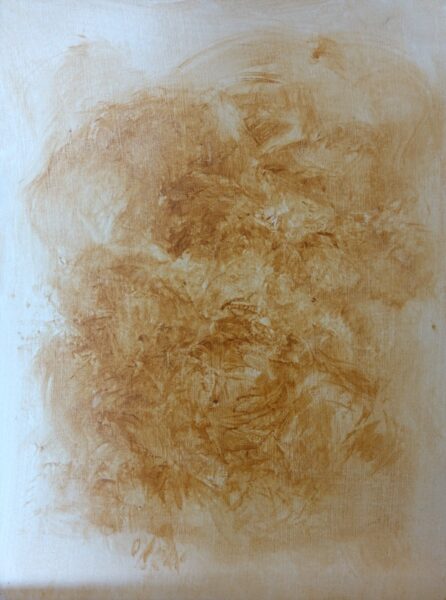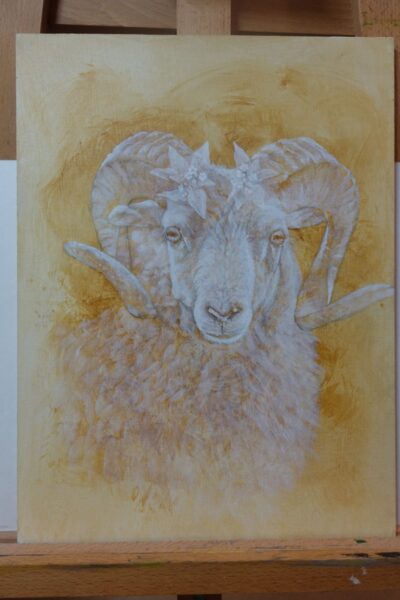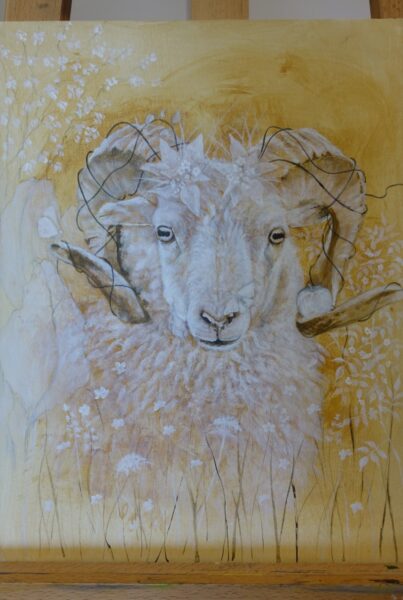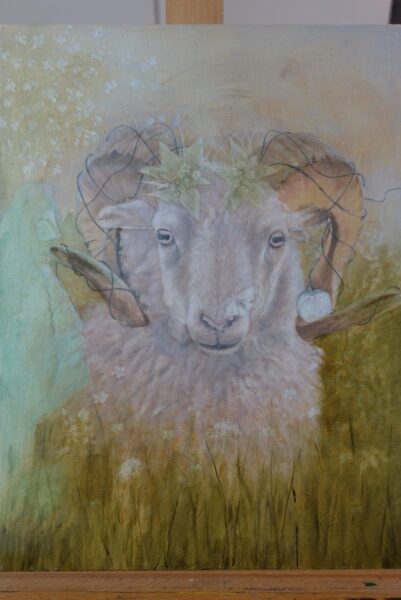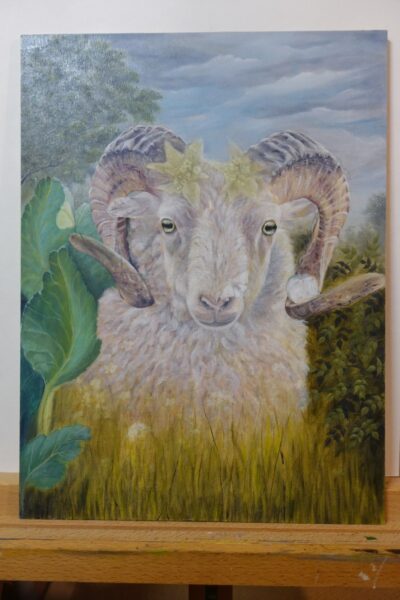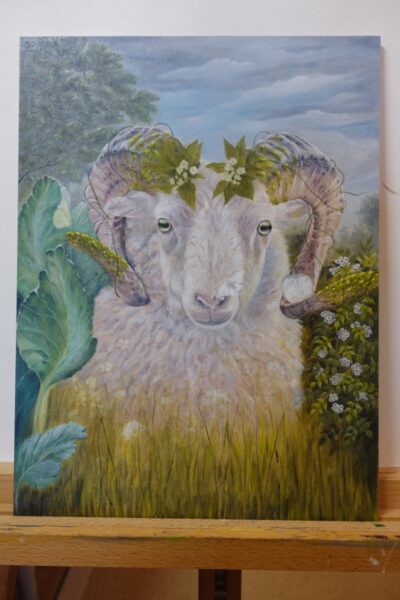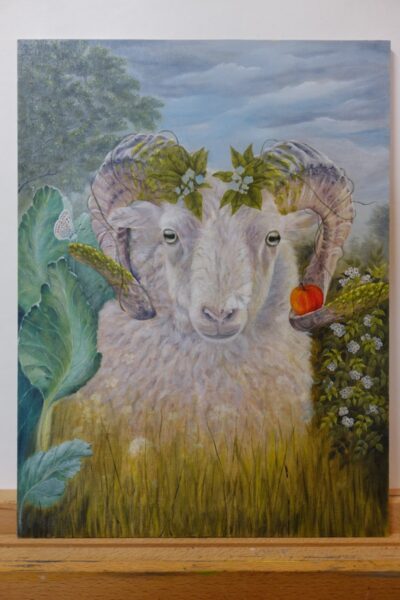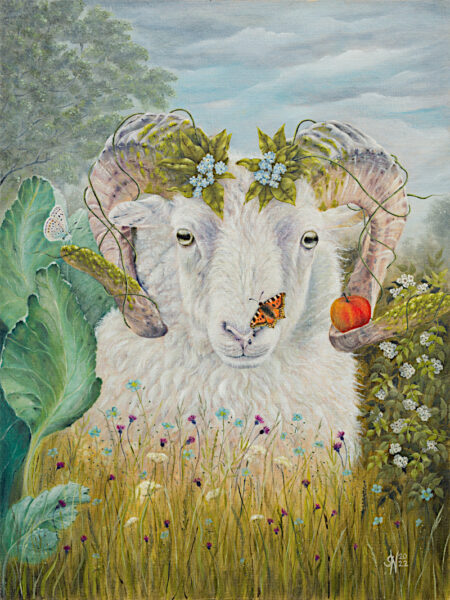Insight into the process of creating my work
Again and again people ask me at exhibitions how I come up with the motifs in my paintings and what technique I use to put them on canvas or paper.
How do I come up with my motifs?
You already know that I take my inspiration from nature. But it is not only inspiration, but also the abandonment of limiting thought patterns that shapes my art. The procedure is different, depending on whether I draw or paint.
For oil/acrylic paintings ...
... I like to work with the technique of "free association". You can imagine this as looking for cloud animals in the sky, or faces in tree trunks or on stones. I start by putting myself in a meditative state, which works well for me with music. When I'm ready, I intuitively choose a colour for the underpainting, close my eyes and let my hand run free. When I have the feeling that the underpainting is ready, I sit down in front of it and let myself go with it until the first images become visible in the abstract scrawl. I paint these images - still in the underpainting colour - more and more. Later I continue to work with colours.
For drawings ...
... I rely on spontaneous ideas and impulses that come to mind without thinking about them. For example, in the phase between being awake and dreaming or also when painting and drawing. I play with these ideas until I have a rough picture of the planned drawing, for the details I let myself be inspired by reference photos.
The rest is then "only" technique
When painting, I put many semi-transparent layers of paint (glazes) on top of each other and go into more and more detail. The glazes give a work more depth, but the technique is a little tricky because the layers of paint underneath influence the colours of the layers above. The more the painting is finished, the less transparent the layers become. This allows you to paint out very fine details. Finally, light and shadow accents are added - voilá! Before the finished picture can be framed, I apply varnish to protect it. For this, however, the paint must be completely dry. With oil paintings, this takes a few months.
I also work in layers when drawing - with graphite I use different degrees of hardness for this. With coloured pencil drawings, thin layers of colour are laid on top of each other, just like in painting. In contrast to painting, however, when drawing I work from light to dark, leaving out light details. Since erasing is only possible to a very limited extent, especially with coloured pencils, I can expand the motif while working, but other changes are hardly possible. Therefore the rule here is: "What lies, that clues", as we say in Austria. This means that once an action has been taken, it cannot be undone.
How long do I need for a picture?
Mir ist eine möglichst realistische Darstellung mit vielen Details sehr wichtig. Man könnte fast sagen, ich bin ein Perfektions-Freak. Leider. Denn ich muss mich manchmal wirklich dazu zwingen, aufzuhören. Man kann eine Arbeit nämlich auch kaputtmalen- oder zeichnen. Und das wäre sehr schade, immerhin sitze ich viele, sehr viele Stunden an so einem Bild. Bei einer Zeichnung, ca. A4, reden wir von locker 20 – 30 Stunden. Farbstift dauert noch länger. Bei Ölbildern sind es Wochen, weil die vielen Farbschichten erst trocknen müssen, bevor man mit der nächsten Farbe darüber malen kann.
always hear: "Enviable, I would never have so much patience! I always have to laugh about that. Because anyone who knows me knows that I am actually a very impatient person. Except in art - fortunately!
Hier siehst Du am Beispiel von “Der Bock als Gärtner” die Entwicklung eines Bildes von der Untermalung bis zum fertigen Bild.
